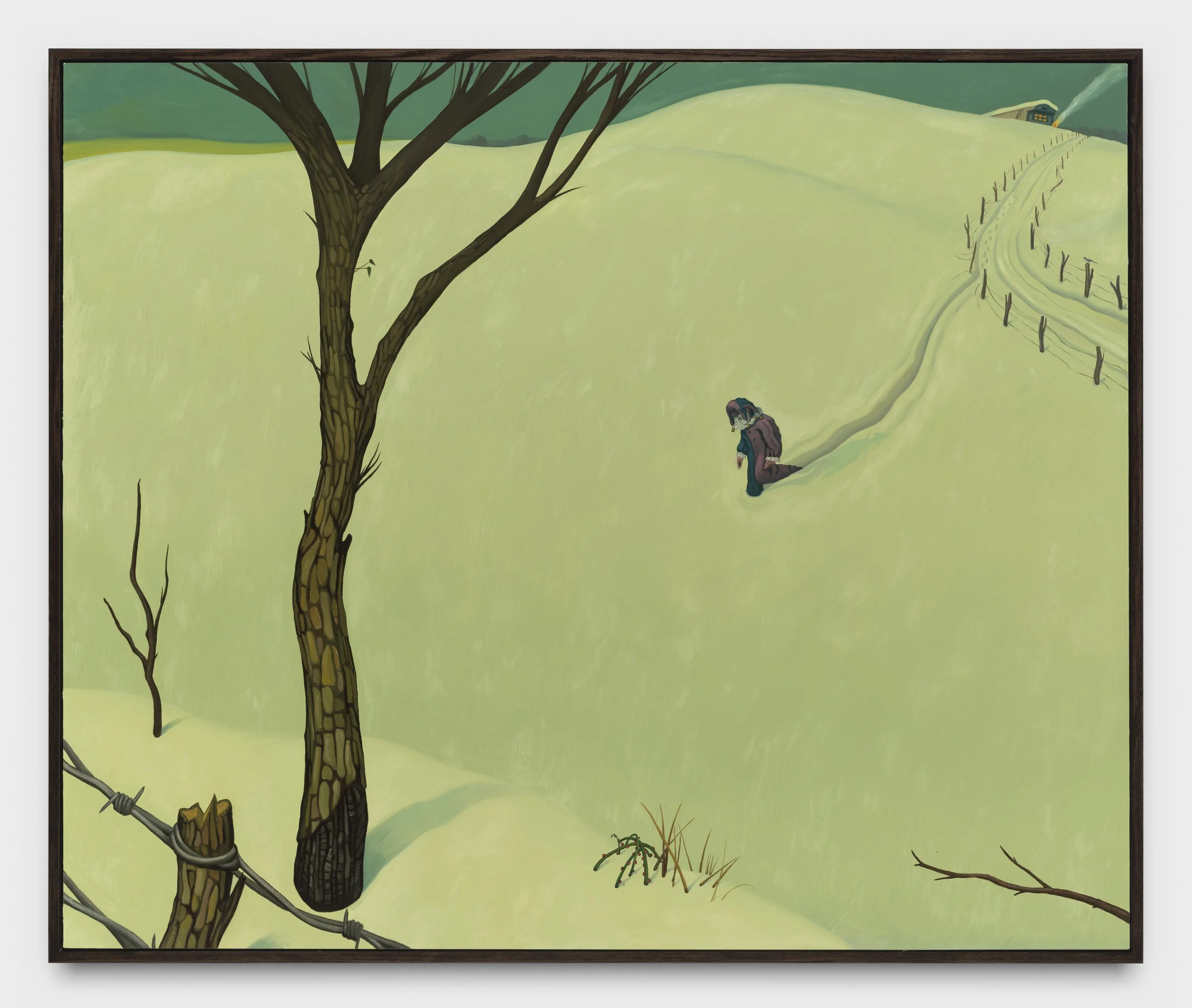installation photos
exhibited works
press
Over the Influence, Paris is thrilled to announce Yellow Brick Road, a suite of new paintings by Austin Harris, and the artist’s third solo with the gallery. In this body of recent works, Harris excavates his personal and familial archives, revealing not only a critical ethos but also the humor and tenderness that arises in unlikely places.
Investigating and critiquing one’s own background is not an unusual methodology for an artist, but Harris’ practice has urgent stakes: he interrogates his childhood and adolescence in predominantly white, rural, and working-class communities within the state of Washington. The artist’s imagined scenes often situate male figures within landscapes that depict moments of play, pleasure, and precarity amidst limited social options: whether this be shooting guns, running through snowy hills, riding in the back of vehicles and motorcycles, or hanging near local dive bars. The characters are usually white, with some exceptions, signaling not only the ethnic makeup of the communities in which the artist was raised, but also the racialized affinities that dictate familiarity. Born to parents who struggled with generational addiction and frequented prison throughout his youth, Harris is no stranger to the complex threats of toxic masculinity and activates this tense terrain in his oeuvre.
A devout draftsman, Harris executes preliminary drawings before approaching the canvas. His figures are fastidiously rendered in surroundings that are often devoid of anything alive and thriving, instilling them with a sense of unease and introspectiveness. As a result of the processes of both learning and unlearning, Harris’ vignettes maintain untenable dimensions and exaggerated proportions that contribute to their surrealness. The artist is not concerned with naturalism, instead, he prioritizes the sensations and emotions that belie the relations he depicts. His figures press against the frame and the edges of their worlds; threatening to enter the reality of the audience. Diligently rendered, Harris' figures have oddly tinged skin, exaggerating their yellow and red undertones to achieve an uneasiness at once funny and emotive. Often depicted as exhausted with baggy eyes and bleak gazes, the cast that populates Harris’ scenes are laborers: their fingernails tattered and dirty, their gazes always askew, refusing to engage directly with onlookers.
The artist renders gazes such that they are mediated through mirrors or other surfaces, rarely giving onlookers full access to their identities. Harris is fascinated by the ritual of uniforming and costuming with which white men armor themselves against threats of emotions, vulnerability, and the perceived usurpation of power. In “Looking Back”, Harris imagines a biker gang member in clown makeup, at once poking fun at the need to perform roles of whiteness and masculinity, while also referencing the art historical and literary tropes of the jester or the fool. Harris is not wholly condemning the people who he paints, but rather approaching their insularity with critical empathy and using humor to poke fun and prod open moments of critique. Harris’ paintings insist upon the humanity of communities who are only working to get by, performing masculinity into which they were inculcated and believe they must sustain–however misguided and conservative this might be.





















